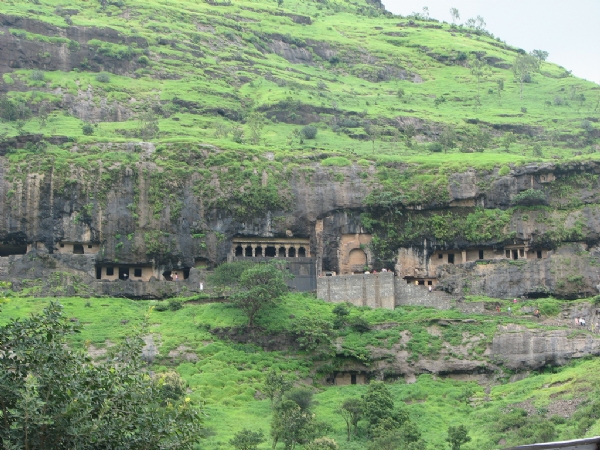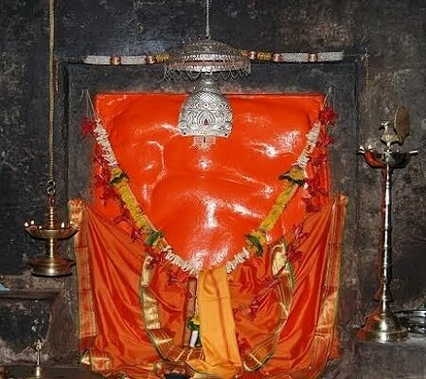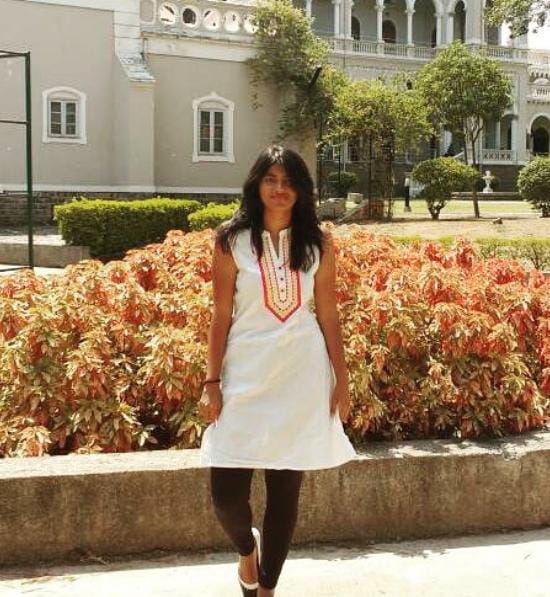Lenyadri Girijatmaj Ganpati Temple: An enigma in Junnar
The Ganesh temple occupies the 7th complete cave which gives a wide view of the temple; Puranas say that Devi Parvati practiced tapascharya for 12 long years to obtain a son in this cave; After which Lord Ganesh himself came before her!
Total Views | 278
Very close to Pune, in the taluka of Junnar, lies the enigmatic Lenyadri cave complex. Here lie the hills, hosting 30 caves which date back to the 3rd BCE. 29 of these caves are actual Buddhist chapels and the monk quarters, but just one of them is a Ganesha temple – that too one of the most important ones in Maharashtra. The Lenyadri Girijatmaj Ganpati Temple is one of the Ashtavinayak Temples located on the northwest bank of the Kukdi River.

The Ganesh temple occupies the 7th complete cave which gives a wide view of the temple. The Puranas say that Devi Parvati is said to have practiced tapascharya for 12 long years to obtain a son in this cave! After the long tapascharya, Lord Ganesh himself came before her.
Inside the caves | The cave 7 here is probably the most interesting one, hosting the ‘Ganesh Lena’ – the Ganpati cave. This cave is shaped as a vihara, and has a huge hall and close to 20 cells. In front of the entry gate of the temple are huge pillars with pictures of various animals beautifully carved on them. The sabhamandap of the temple is 60 ft wide with exactly 18 rooms of 7×10 ft area.

The Sabhamandap is unique, as it is not supported by any pillar. Outside the sanctum of the temple rest carved pillars. The sanctorum of the temple shows a wide range of unique art, in the form of devotional paintings of Shri Guru Dattatray, Lord Ganesh resting on Shiv-Parvati’s lap, and Bal Ganesh playing games.
The actual view of every cave remains a mystery for pilgrims because of the difficult rocky path. Every day, the pilgrims climb a rocky staircase of 338 stairs to receive Lord Ganesh’s blessings.
The old stairs are a bit higher to climb. As they can’t be climbed by elders / disabled people, the arrangement of ‘palkhi’ is in place. The temple and the neighbouring caves are in possession of The Archaeological Survey of India, and is well preserved in spite of being carved in the early ages.

The name ‘Lenyadri’ actually means ‘mountain cave’. It is derived from “Lena” in Marathi meaning “cave”, and “adri” in Sanskrit which means “mountain” or “stone”. There is no electricity in the temple and is constructed in such a way that during the day time, it is always illuminated by the sun.
History | Did you know that the Girijatmaj Lenyadri Ganapati is the only Ganesh temple carved out of caves? Lenyadri tells an ancient tale that when the Pandavas lived in agyatvas during their 13th year, they carved out these caves in one night. There are 28 caves here, stretching from east to west.
The Ganesh temple occupies the 7th complete cave which gives a wide view of the temple. The Puranas say that Devi Parvati is said to have practiced tapascharya for 12 long years to obtain a son in this cave! After the long tapascharya, Lord Ganesh himself came before her.
Also Read | Gandikota fort, the Grand Canyon of India
The meaning of Girijatmaj is “Girija” (Devi Parvati ) and “Aatmaj” means Son. Hence the temple got its name as that. The temple faces south. Two water tanks rest in front of the temple. Similarly, the 21st and the first caves also house a water tank. The specialty of these tanks is that they have water all around the year. In addition, the water is clean and naturally fresh. The pilgrims have to climb up 338 steps to reach the excavated temple!
Inside the caves | The cave 7 here is probably the most interesting one, hosting the ‘Ganesh Lena’ – the Ganpati cave. This cave is shaped as a vihara, and has a huge hall and close to 20 cells. In front of the entry gate of the temple are huge pillars with pictures of various animals beautifully carved on them. The sabhamandap of the temple is 60 ft wide with exactly 18 rooms of 7×10 ft area.

The 6th & 14th caves have Buddha-pillars or stupas. These caves are shaped hemi spherically interiorly, hence the echoes in here can be easily heard. That is why these Stupas are also referred as the ‘Gol-Ghumat’s.
The Sabhamandap is unique, as it is not supported by any pillar. Outside the sanctum of the temple rest carved pillars. The sanctorum of the temple shows a wide range of unique art, in the form of devotional paintings of Shri Guru Dattatray, Lord Ganesh resting on Shiv-Parvati’s lap, and Bal Ganesh playing games.
Also Read | Ramappa Temple, the Kakatiya legacy in Warangal
Like all the other Ashtavinayak temples, the idol in this one too is swayambhu. It is believed that the image here is not a separate idol, but is a 3D image on the cave wall that shows the back of Lord Ganesha. It is believed that the God’s face is visible on the other side of the hill. The image lies on the rear wall of the two central cells, which are combined.
The actual view of every cave remains a mystery for pilgrims because of the difficult rocky path. Every day, the pilgrims climb a rocky staircase of 338 stairs to receive Lord Ganesh’s blessings.
The old stairs are a bit higher to climb. As they can’t be climbed by elders / disabled people, the arrangement of ‘palkhi’ is in place. The temple and the neighbouring caves are in possession of The Archaeological Survey of India, and is well preserved in spite of being carved in the early ages.







